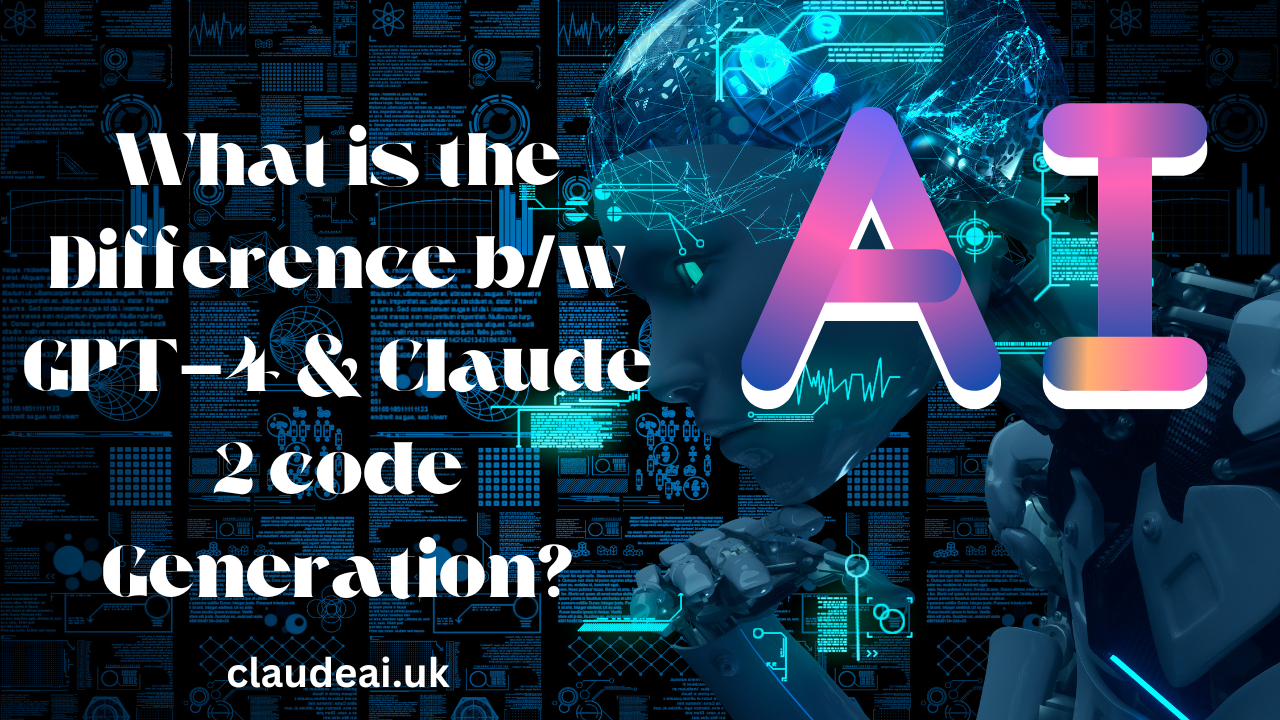GPT-4 and Claude 2 are two of the most advanced AI systems today with powerful natural language and code generation capabilities.
Both systems represent major leaps in AI, but they have some key differences when it comes to generating code. In this article, we analyze the differences between GPT-4 and Claude 2 specifically in their approaches to and capabilities in code generation.
Background on GPT-4 and Claude 2
GPT-4 is the latest version in OpenAI’sGenerative Pretrained Transformer series. It is the successor to GPT-3 and is trained on even more data – over 1 trillion parameters! GPT models are known for being exceptionally capable natural language systems trained using self-supervised learning.
Anthropic created Claude 2 as a robust and safe AI assistant focused on commonsense reasoning.
Unlike GPT models which optimize only for prediction accuracy, Claude optimizes directly for constitutional AI principles to be helpful, harmless, and honest.
Training Datasets and Methods
GPT-4 continues GPT-3’s approach of self-supervised learning on vast datasets scraped from the internet. This achieved incredible breadth, but lacks depth in any specific domain like coding. There are also potential data quality issues and biases.
Claude 2 utilizes a supervised training approach developed by Anthropic called Constitutional AI.
This focuses training directly on building helpful skills while upholding safety principles. Less total data is used, but it is extremely high-quality and carefully curated.
Language and Code Understanding
Because GPT-4 is trained primarily to predict next tokens rather than directly optimize for understanding, its core competencies lie more in language generation and completion. Its understanding of language semantics and code logic is more limited.
Claude 2 utilizes Claude 1’s natural language understanding system as a base. Its training specifically targets building genuine comprehension in order to follow instructions and answer questions accurately. This makes it better suited for precise code generation.
Code Generation Capabilities
GPT-4 exhibits creativity and can generate plausible-looking code, but lacks the discipline to produce runnable, robust code.
It may hallucinate or produce inconsistencies, limitations, and bugs – especially in long or complex generation tasks.
Claude 2 adheres strictly to generating only honest, helpful output. This means it aligns generation to a user’s exact specification without fabricating information.
The structured nature of code plays well into Claude’s focus on understanding logical semantics.
Difficulties Translating Intent into Code
GPT systems struggle to translate abstract user intent directly into functional code. Because they optimize for next token prediction, they focus more on prolonging plausible generation rather than perfectly encoding a purpose.
Claude 2 directly targets mapping user instructions into intended code behavior. Its training and architecture allow it to ground concepts well and match generated functions precisely to specifications without meandering or losing track of objectives.
Integration with Existing Codebases
GPT-4 can generate aesthetically quality code, but lacks the contextual consistency and precision necessary to integrate with existing architectures that have defined styles, patterns, naming conventions, etc. hallucinations that would produce bugs.
Claude 2 maintains contextual code consistency and integrates user constraints and environments into generation. This allows it to align stylistically with existing codebases and languages while avoiding bugs or logical errors better than GPT-4.
Conclusion
GPT-4 produces impressive code generation capabilities unmatched in linguistic creativity and volume. However, Claude 2 better comprehends user intent and translates instructions into robust, runnable code optimized directly for stability, precision, and integration into downstream uses.
For code generation rooting in real-world functionality beyond raw output volume or novelty, Claude 2 represents a powerful leap over GPT-4 and previous AI systems.
The strengths of each system highlight key ingredients still required to advance toward general and safe AGI – integrating Claude’s principled understanding and scaffolding approach with GPT’s scope and fluidity could be a promising path forward.
Both are awe-inspiring AI achievements nonetheless that give us an exciting glimpse into the bright future ahead.

